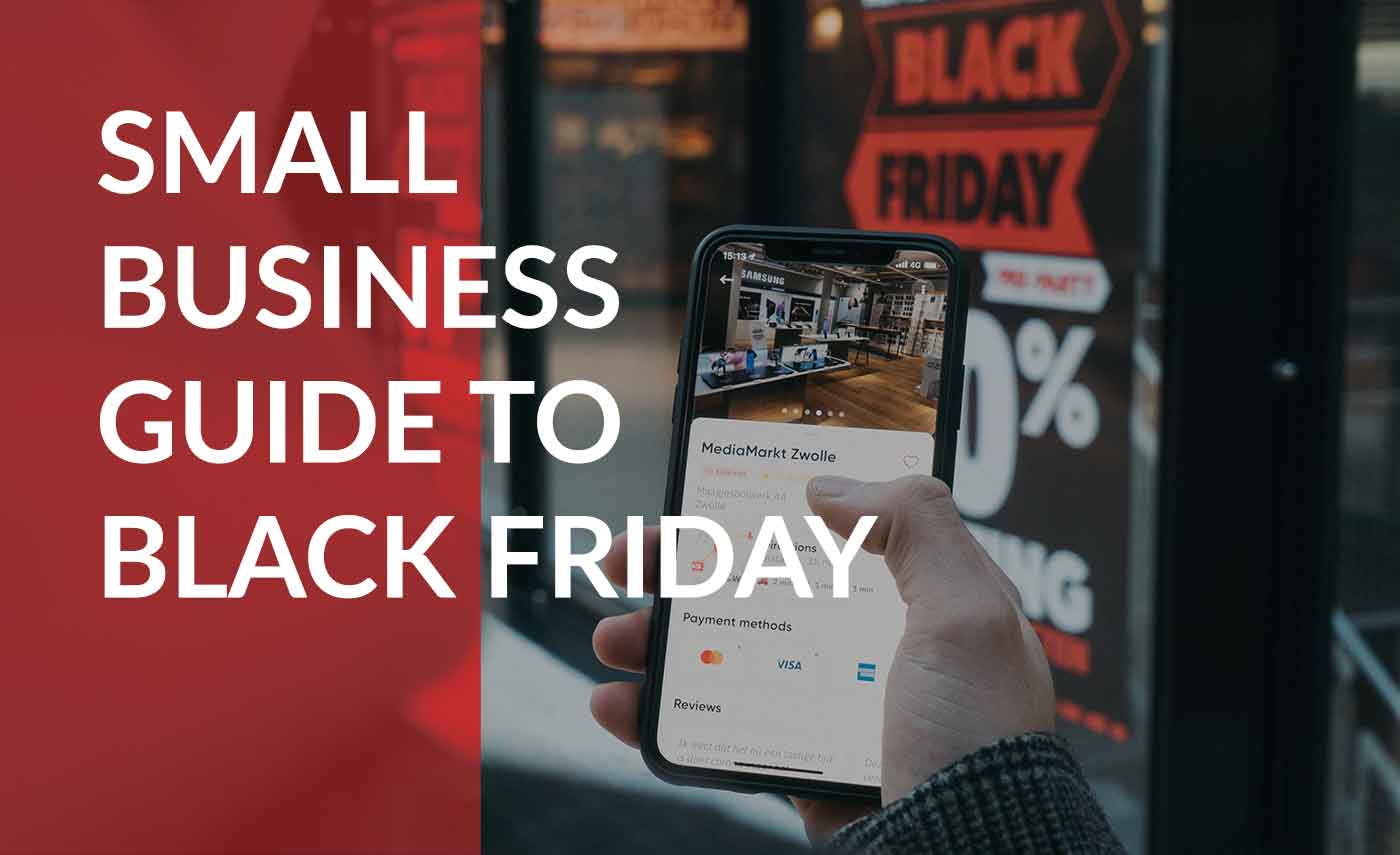Small Business Guide to Black Friday
As a small business, have you ever wondered how to successfully partake in holidays like Black Friday?
After all, you don’t have a marketing budget like the big box stores and digital retailers. So, how are you to compete and get your share of the holiday sales?
In this guide to Black Friday for small businesses, we’re breaking down what you can do to give your small business a chance to succeed on Black Friday and throughout the entire holiday season.
Black Friday for Small Businesses
What is Black Friday?
The Friday immediately after Thanksgiving traditionally represents the start of the holiday shopping season. The term “Black Friday” as we know it, meaning a day when businesses move from the red into the black, has only been around since the 1980s. When it was first coined in the 1860s, it referred to a manipulated crash in the stock market due to the inflated price of gold.
For many consumers, Black Friday means staying up late to be the first in line for dibs on the most significant discounts. And some digital retailers attempt to recreate that experience digitally. They create a sense of urgency that potentially drives sales using clever tactics. Some design digital “wait lines” and provide staggered access to their sites, and thus, to their discounts. Others go so far as to limit the amount of time shoppers have on their sites, hoping to drive those impulse buys.
The Evolution of Black Friday
A single day of deep discounts and flash sales may have sufficed in the 1980s, but not anymore. Black Friday now kicks off a series of big shopping days.
Small Business Saturday immediately follows Black Friday and, for obvious reasons, shouldn’t be ignored by small businesses. Then comes Cyber Monday, a day full of digital sales, and finally, Giving Tuesday, a day dedicated to non-profits and their appeals in hopes of driving donations.
So, as a small business, how can you participate in the biggest shopping season of the year in ways that make both you and your customers happy?
Tips to Guide Your Black Friday Success
Many small businesses can’t afford to offer discounts as deep as 50% on their products and services. If you can’t beat the big chain department stores and digital retailers at their own game, then don’t.
Use the following tips to plan your Black Friday and holiday shopping season goals, events, and discounts, and learn how you can offer value to your customers throughout the season.
Create a Holiday Marketing Plan
A marketing plan is essential to help you plan your goals and create the relevant supporting strategy, tactics, and offers. You can read all about how to make a holiday marketing plan right here.
Create Relevant Moments and Offers that Entice
As we mentioned above, many small businesses can’t compete with larger retailers when discounting products and services, and that’s okay.
While many consumers hunt for the best deals on Black Friday, others don’t want to be part of the shopping hordes and eschew the long lines. In fact, according to Finder’s research, as many as 54% of Americans may not be participating in Black Friday shopping.
With that in mind, instead of flaunting crazily discounted items to draw foot or online traffic to your store, consider offering something else of value to your customers.
For example, you could provide complimentary gift wrapping to those who shop at your store on Black Friday and during the holiday season. By doing this, you’re providing added value to your customers by saving them time and from the hassle of wrapping their purchases.
Another idea to consider is partnering with other local stores or businesses. If you’re a brick-and-mortar, you could participate in a shopping event with other like-minded business owners. Set up tables at a holiday sales event with your best-selling wares or offer curated gift selections to make your customers’ shopping experience is a breeze.
Make it Easy for Your Customers to Shop from Anywhere
Few people want to get up at 4 am to stand in line outside and wait for your store’s physical doors to open, but that doesn’t mean you have to miss out on their sales.
Instead of having people cater to your business hours, allow them to shop on their own time. Someone may not want to wait in line at 4 am, but they may be up feeding their baby and shopping from their phone. Meet your customers where they are by creating an eCommerce website to capture digital traffic and sales.
Create Your eCommerce Website
Communicate Your Offers to Your Audience
Suppose your customers don’t know about your special deals and offers this holiday season. In that case, they won’t be taking advantage of them.
You can communicate your memorable holiday offers in a variety of ways:
- Updated information on your website.
- Email marketing communications.
- Pro tip: Use a custom, professional email address that matches your domain name to increase your customer’s trust in the inbox. They aren’t likely to open an email from an unrecognized sender.
- Social media notices and posts.
- Physical mailers.
- Local advertising on TV or radio.
Don’t Stop at Black Friday
Small Business Saturday
When it comes to having a successful holiday shopping season, you can’t leave all your hopes pinned to one calendar day like Black Friday.
As a small business, you have to consider the shopping days that follow Black Friday and determine how to participate in them. The Saturday after Black Friday is known as “Small Business Saturday,” and that’s a fantastic opportunity for you.
“Founded by American Express in 2010 and officially cosponsored by SBA since 2011, Small Business Saturday has become an important part of small businesses’ busiest shopping season.” According to research done by American Express, there was record spending on Small Business Saturday in 2020. Last year, spending reached an estimated $19.8 billion USD. Don’t you want your piece of that holiday pie this year?
Make the most out of Small Business Saturday by leveraging the tools and marketing materials provided to you here by the Small Business Administration, or SBA.
Cyber Monday
The term “Cyber Monday” officially entered our lexicon in 2005. It was coined to describe the increase in online sales that occurred on the Monday after Thanksgiving.
In 2020, Cyber Monday sales reached $10.8 billlion USD, becoming the single biggest eCommerce selling day of all time.
To participate, you must have an eCommerce website where your customers can make purchases directly from you. Having a website is no longer a “nice to have” in today’s age; it’s necessary to compete in a digital market.
If you have yet to create a website for your business, set some time aside to do it today. Building a website isn’t a complicated process requiring coding knowledge; instead, many website builders make the process fast and straightforward.
No time to create a website, even with a website builder? That’s okay; there are plenty of professionals who can help you get online quickly and with a great-looking and functioning site. Check out Domain.com’s Website Design and Marketing Services to get the assistance and guidance you need to get online fast.
Get Online Today
Making the Most of Black Friday for Your Small Business
You don’t have to compete with large retailers for your small business to have a successful Black Friday.
Instead, think of Black Friday as the kickoff to a holiday shopping season where you’ll do well because you’re providing the correct offers and value to your customers. You can promote things like complimentary gift-wrapping or customized gift guides to bring in traffic and sales while building customer relationships.
Have you run any Black Friday specials in the past? Let us know what has and hasn’t worked for you in the comments below!



